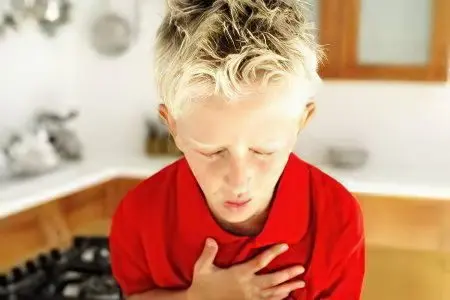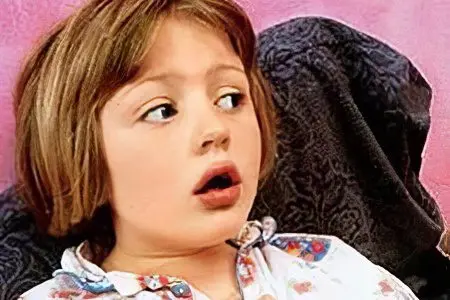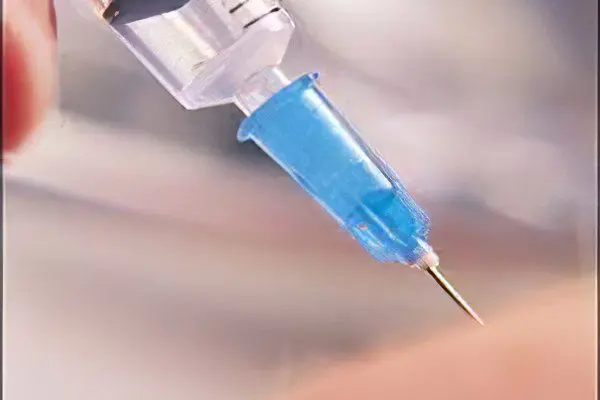Contents

Anaphylactic shock (anaphylaxis) – painful condition. It is accompanied by a sharp increase in the sensitivity of the body. Sensations are manifested by the repeated introduction of the allergen substance. These include any kind of foreign proteins. In addition, anaphylactic shock can be caused by:
Medications.
Insect bites.
etc. Anaphylactic shock is dangerous for the life of adults and children. It is one of the most severe manifestations of allergic reactions.
It takes very little time for the manifestations to become critical – starting from a few seconds, but not more than 2 hours. It does not matter how the allergen came into contact with the patient. The more it is, the worse the patient’s condition will be.
Causes of anaphylactic shock in children
The use of certain drugs.
Contact with radiopaque substances.
Methods of allergic diagnostics.
Taking antibiotics (especially penicillin).
Food allergy.
Insect bites.
The use of gamma globulin, a number of vaccines, sera.
There are quite rare cases – for example, when the body reacts in this way to cold. It is very difficult to identify the exact allergen, especially if these are drugs, and the patient does not take them in a single amount.
In children, such manifestations are often caused by some vaccines, sera. Usually, shock is evident upon secondary contact with the allergen. Often in children whose mothers used a dangerous drug during pregnancy and breastfeeding, anaphylactic shock manifests itself due to the first contact with the drug. The method of administration and dose are not important for a sensitized (allergic) patient.
Anaphylactic shock due to food intake is quite rare. Often among children there is intolerance to milk (sensitization to beta-lactoglobulin), fish dishes, egg white.
Symptoms of childhood anaphylactic shock

Symptoms of anaphylactic shock in children are related to how the disease develops. First, the allergen enters the body. With skin contact, itching, swelling, etc. occur. If the disease has developed due to the product, then the corresponding symptoms begin. There are some manifestations of the disease:
Signs of anxiety, fear.
Throbbing headache.
Dizziness.
Numbness of the lips and muscles of the face.
Noise in ears.
Cold sweat.
Disruption of the gastrointestinal tract.
Quincke’s edema.
Hives.
Attacks of shortness of breath.
Spasm of the bronchi.
Tightness in the chest area.
Nausea.
Stomach ache.
Vomiting.
Convulsions.
Foam from the mouth.
Low blood pressure.
Uncontrolled urination.
Bloody formations that stand out from the vagina (in adults).
The pulse becomes thready.
Loss of consciousness.
If the last symptom is observed, there is a risk of death. It is necessary to immediately provide first aid and bring the patient to his senses. From suffocation, death occurs in 5-30 minutes. Vital organs decompose in 24-48 hours. These are irreversible changes that must be prevented immediately. There are cases when death occurs as a result of changes in the kidneys (glomerulonephritis), which require more time for pathology. Also, after a long time, destruction can be diagnosed:
gastrointestinal tract (intestinal bleeding),
heart disease (myocarditis),
death of brain cells (edema, hemorrhage)
In most cases, shock occurs in two phases. First, there is some improvement in well-being, and then the blood pressure drops sharply. Patients who have suffered such a shock spend at least 12 days in a hospital.
There are situations when children can first notice certain manifestations of the disease. They are observed immediately after contact with the allergen (urticaria, itching, dizziness, etc.) They are called “anxiety” symptoms.
What to do with anaphylactic shock in a child?
Immediately you need to call an ambulance. This is done at the first symptoms. This is especially important when you are aware of an atypical reaction to an allergen in advance. In such a case, the ambulance dispatcher is warned that he needs to send a specialized team to the call.
When the allergen is known, the patient must be isolated from it, preventive measures should be taken: ventilate the room, or treat the wound, depending on its nature. If it is a bite, a tourniquet is applied over it, something cooling. The patient should take a horizontal position as soon as possible.
You need to give your child a dose of antihistamines, following the instructions. Give him any of the antihistamines (tavegil, suprastin, claritin). If you do not know what kind of medicine is usually given to the child, give what is available.
Tavegil (syrup) children 1-3 years old do not give more than 2-2,5 ml twice a day. Patients from 3 to 6 are given no more than 5 ml, and those who are 6 to 12 years old need 5-10 ml. Also, at the age of 6 to 12 years, you can give tablets – one half twice a day, teenagers and adults are given a whole tablet.
Suprastin those who are 1-12 months old are given 5 mg (0,25 ml), at the age of 2-6 years the dose increases to 10 mg (0,5 ml), and patients 7-14 years old need 10-20 mg ( 0,5–1 ml). The size of the daily dose should not exceed 2 mg/kg.
The next step is to look after the baby. Be sure to regularly measure the indicators of pulse and pressure, frequency and rhythm of breathing.
It is required to remember the exact time of onset of the development of anaphylactic shock and inform the doctor about it. It is necessary to say as accurately as possible when the manifestations of the violation of the condition began and mention the names of the medicine that was given to the patient before the specialist arrived.
How to treat anaphylactic shock in children?

When diagnosing anaphylactic shock, the child urgently needs an injection of adrenaline. This will help relieve the symptoms of allergies. Usually, patients suffering from such attacks are well aware of their problem. A child can rarely use the necessary medicine on his own.
If the reaction occurs for the first time, you must immediately call an ambulance. Prior to their arrival, it is necessary to achieve patency of the airways. It is necessary to eliminate mucus and vomit from the oral cavity, to prevent retraction of the tongue. If the victim is conscious, you can not show him your anxiety. The tone must remain even. If there is an aerosol inhaler available, it must be used. It stops an attack of bronchial asthma, a corticosteroid hormone tablet (prednisolone, dexamethasone) will also help with this. This will help alleviate the symptoms of shock a little, and therefore wait for the arrival of the doctors.
The child is immediately placed lying down, with raised limbs. Then the fluid from the heart pump will not leak out. Whenever possible, use an oxygen therapy mask of two to four liters for a minute period.
Adrenaline, intramuscular or subcutaneous, is the first step in emergency treatment. Depending on the conditions of assistance, different forms of the drug are used – standard injections in ampoules, intravenous administration, etc. After hospital treatment, it is necessary to exclude the risk of contact with allergens.
Author of the article: Pediatrician, Sokolova Praskovya Fedorovna









